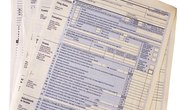The Free Application for Federal Student Aid, or FAFSA, requires a complete picture of your household's financial information to determine your eligibility for grants and student loans. The FAFSA application looks at your household's earnings information for the most recent tax filing year and requests additional data about current total assets.
Current Earnings
When you fill out a FAFSA, it asks for your household's tax filing status, gross income, untaxed income, income tax owed and number of exemptions for the most recent tax filing year. For example, if you are completing a FAFSA for the 2014-2015 school year, you need to use your household's 2013 earnings on the application. You can obtain this data from check stubs, W-2 forms or your completed income tax return. If you submit your FAFSA online, you can also retrieve the data directly from the IRS.
Total Assets
The FAFSA also requires you to report key information about total assets, including the funds in your household's checking and savings accounts. You must also provide details about the amount of money you have invested, including select investments in real estate and business. The FAFSA doesn't limit asset reporting to earnings accumulated within a certain time frame, so it technically requests information that may reach back to the beginning of your household's financial history.
Related Articles
References
Writer Bio
Ashley Mott has 12 years of small business management experience and a BSBA in accounting from Columbia. She is a full-time government and public safety reporter for Gannett.










